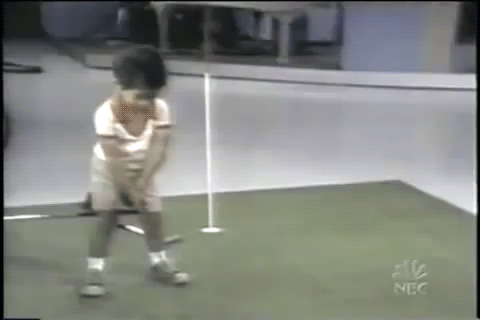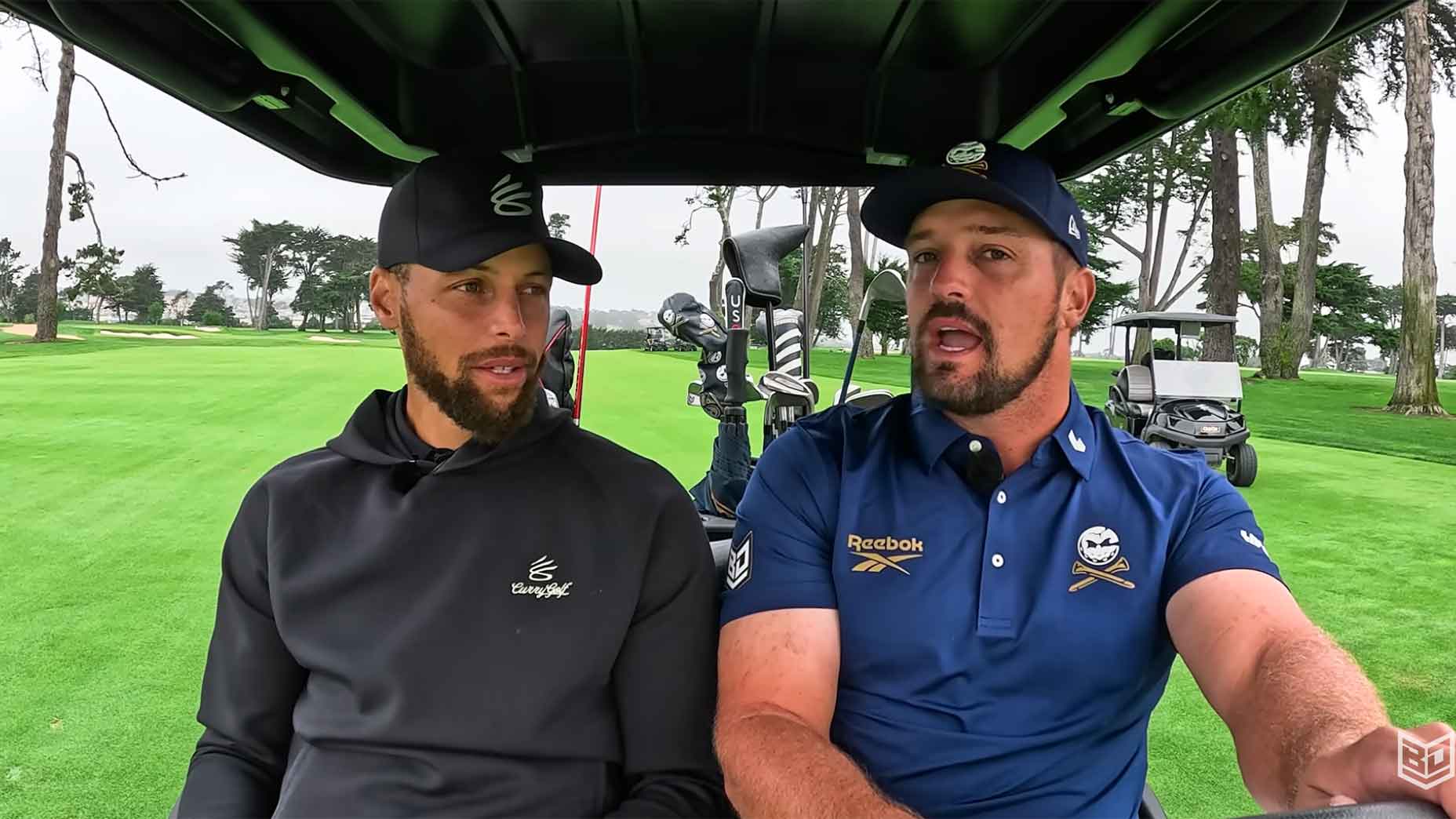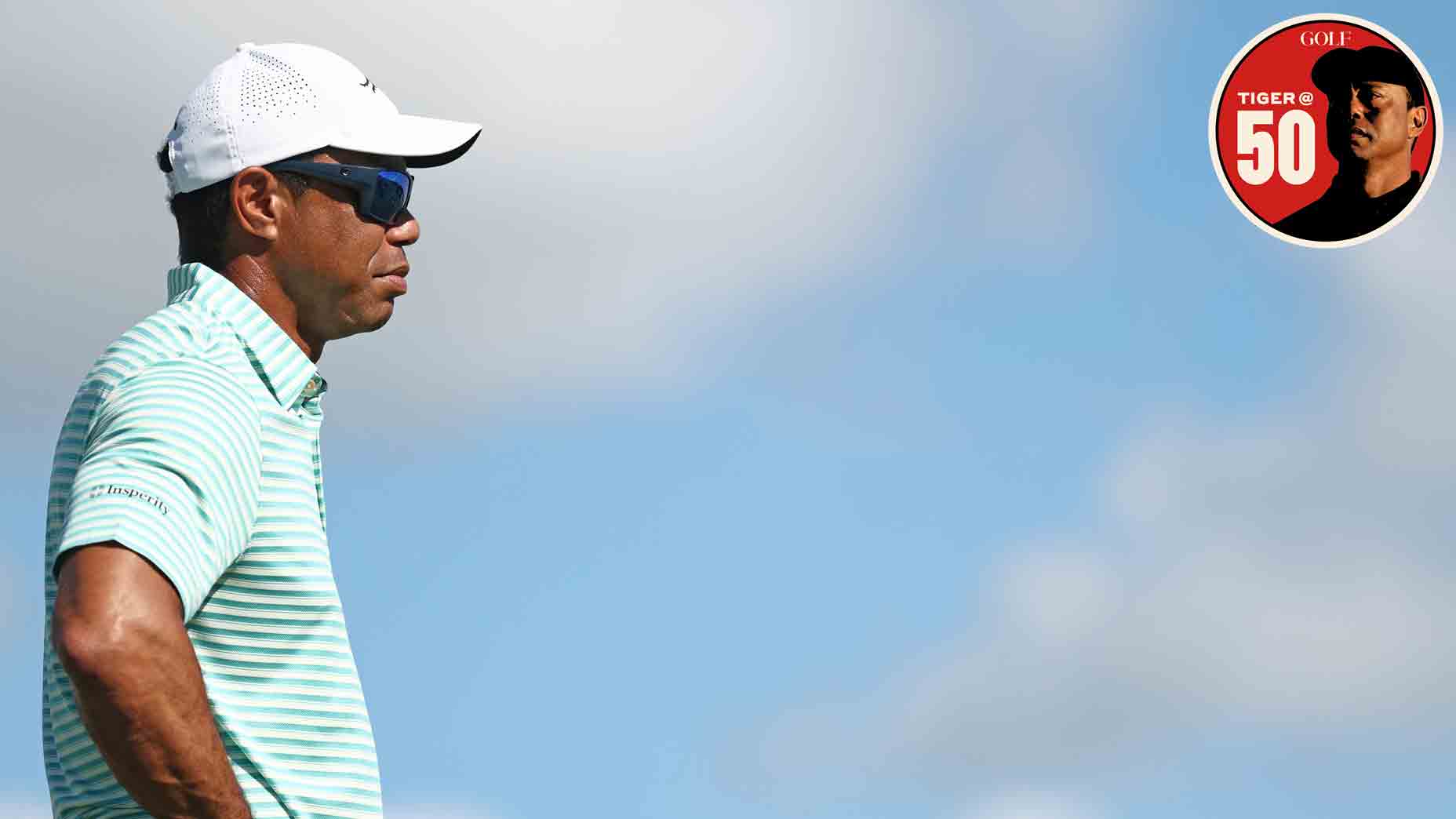 Golf Channel’s surprising new logo? You might recognize it
Golf Channel’s surprising new logo? You might recognize it
What Tiger Woods’ first-ever TV appearance (at age 2!) really taught us

In 2017, as a post-fusion Tiger Woods contemplated his return to competitive golf, he talked about his motivation. His kids, Sam and Charlie, had never seen the version of Tiger Woods with which the rest of the world was so familiar. “They think I’m the YouTube golfer,” he said. “They’ve never seen me in action.”
In many ways, Woods is the YouTube golfer. The video platform came to popularity in the mid-2000s, just as Woods was in the midst of his prime. Consider that his style of play — wild recovery shots, electric fist-pumps, a flair for the dramatic — made him the perfect star for the medium. Combine that incomparable highlight reel with two decades’-worth of interviews plus an endless run of entertaining commercials, and you’ve got a significant portfolio. The final ingredients, of course, are Woods’ mystique and the arc of his public life, from child prodigy to mystique-filled mega-star to scandal, injury and comeback. It all added up to us seeing plenty of Woods, but always wanting more. More, more more. We desired it, and on YouTube, there was always the hope we might find it.
In some ways, we’re still on that quest. The clips that we’re going to break down over the next few weeks are, first and foremost, entertaining. But my hope is that we can learn something from Woods’ video footprint. What can watching Tiger on YouTube teach us about him as a person? How can it help us better understand his career?
I’m calling this venture the Tiger Woods YouTube Project. Every day, we’ll break down one clip per year of Woods’ life, looking for insight, entertainment, awe, fun. I’ll bring in a guest reviewer for each clip. I’m terrifically excited for some of the reviewers we’ve got in store, and I think you will be, too.
Chapter 1: Tiger’s first TV appearance (1978)
For Week 1, we’re joined by Michael Bamberger, longtime GOLF writer and author of the soon-to-be-released book “The Second Life of Tiger Woods.”
First, here’s the video in question. Technically, two videos – the second is suggested supplemental watching.
After he saw a news segment on TV that showed several toddlers at a driving range, Mike Douglas noticed that one of them stood out — so he invited Tiger Woods, age 2, onto his talk show on the same day as Bob Hope and Jimmy Stewart. It’s just a 36-second segment (plus a few more seconds in the secondary video) but we see quite a bit from young Tiger.
DYLAN DETHIER: Michael, there’s so much to unpack even in this mini-segment. But before we get to the nitty-gritty, I want to just get your surface-level first reactions. How does this video make you feel? What’s your initial takeaway?
MICHAEL BAMBERGER: So many thoughts. I’ve watched this many times over the years. For one thing, this clip is really the start of a public life, and not of Tiger’s own making. He’s pushed out there by his father, and Tiger looks reluctant. The repetitive tugging on his ear — that looks like stress and nerves to me. At age 2.
There is much to admire in how Earl raised Tiger, and having seen them together more than a few times I don’t have one bit of doubt that there was a close, loving and of course complex relationship there. But to answer your question directly, my first impulse is to say Tiger would prefer not to be there, not to be the focus of all this attention. How does the video make me feel? Queasy.

ADVERTISEMENT
DD: It’s a mix, right? Tiger seems thrilled for parts of it — decidedly less so for others. Do you think 2-year-old Tiger enjoys being on stage like this?
MB: At the risk of being presumptuous, my guess is that the part he enjoyed was pleasing his father and hitting a couple half-decent shots. Or, I should say, amazing shots for a 2 year old. I’m sure under normal conditions — outdoors, on grass, no cameras or people hovering — he could already stripe it.
DD: One of the reasons I wanted to ask you in particular about this video is because you’ve spent a lot of time in recent years watching and thinking about Tiger Woods. I wonder — are there things that are familiar in the 2-year-old version? Are there things that are notably different?
MB: People look at me like I’m the village idiot if I dare to say that Tiger is fundamentally shy and modest. But if you look at 2-year-old Tiger here, to me you see a shy and modest kid, one who is happy to let his clubs do the talking. He of course has no idea that Bob Hope and Jimmy Stewart are icons, and why would he? Their role is to look at him. Nothing has changed since then: Jack Nicholson, Bill Clinton, Michael Jordan — they look at Tiger. Everybody looks at him. His life has existed through the lens of a camera.
As for what is notably different, Woods became a confident person, and did so quickly. I don’t know if he’s a confident toddler. Maybe the winning and the praise that came with it shaped him, even at 4 and 5. From the day he started winning national events as a young teenager, Tiger has been a person who says what he wants to say and does what he wants to do.

DD: We just get a glimpse, but what do you think of his golf swing? Anything that endures over the years?
MB: He shows a natural rhythm, very much in line with how his father swung the club in that period. The club is certainly way too heavy for him, but most kid golfers did as Tiger did then, played with sawed-off adult clubs. Tiger at his best — 1997 through 2000 — had spectacular rhythm. Later, he made a muscle swing and it became much more of a hit. I imagine Tiger looks at that Mike Douglas swing he made, likes the rhythm, and he also likes how his first move is inside, appropriately so. He’s inside but the body is turning. It was the era of the trap-draw swing, even with the driver. So many beginners, then and now, take it outside. Of course, slightly outside is all the rage now for the big men on Tour. But this is a different game than the one in the late 1970s. Tiger never gets enough credit for how he adapted his game to golf’s changing equipment.
DD: What’s your favorite moment in the video? Your least favorite?
MB: Tiger’s speed-walk out. The bag strap around his neck, like it’s a necklace. Earl’s turtleneck and medallion. (Can’t you just hear some classic Earth, Wind & Fire!) Jimmy Stewart’s nonchalance. Hope going for his pocket, an impromptu bit about gambling with a kid. I think Hope knew he’d be the pigeon here. My least favorite thing about it is that it exists at all. Why is Earl selling Tiger at age 2?

DD: What do you make of the way Mike Douglas and his other guests interact with Tiger?
MB: All three — Mike Douglas, Bob Hope and Jimmy Stewart — are so true to their public personas, what worked for them. Douglas, who was an avid golfer, is warm and unpretentious with Tiger. Hope is sardonic, though he is playing more to the camera than to Tiger or even Earl. Stewart isn’t really interacting at all — he’s taking it in, like the reporter he played now and again in the movies. They’re all treating Tiger and Earl with respect, not as a circus act. They’re gentlemanly.
DD: What do we learn, if anything, about Tiger Woods’ life in this video? What insight? Or is the entire exercise ridiculous?
MB: If you really want to think about the life and times of this extraordinary person and athlete — and you can say that whether you like him or don’t — you really can’t think too much about what is going on here. Tiger’s need to perform, for himself and for his father. There’s pressure in that, more than any kid could possibly articulate. It will show up later. It has to. No matter how much love Earl has for Tiger, when you’re putting your child in that position it’s tough. How can the kid not think, Dad will be more pleased with the better I do? In the case of Earl and Tida, Tiger’s junior golf was likely a way of keeping them together. That’s a heavy load.
DD: What did I miss?
MB: Nothing — these are excellent questions, Dylan. And a very creative idea. In writing about Tiger over the years I’ve been amazed at what a treasure trove YouTube is for his life-and-times. His life is one long YouTube video. He may be the first person about whom you would say that.
NEXT: CHAPTER 2 — OUR FIRST LOOK AT TIGER WOODS ON A GOLF COURSE
You can find Dylan Dethier here and Michael Bamberger at Michael_Bamberger@golf.com.
ADVERTISEMENT






